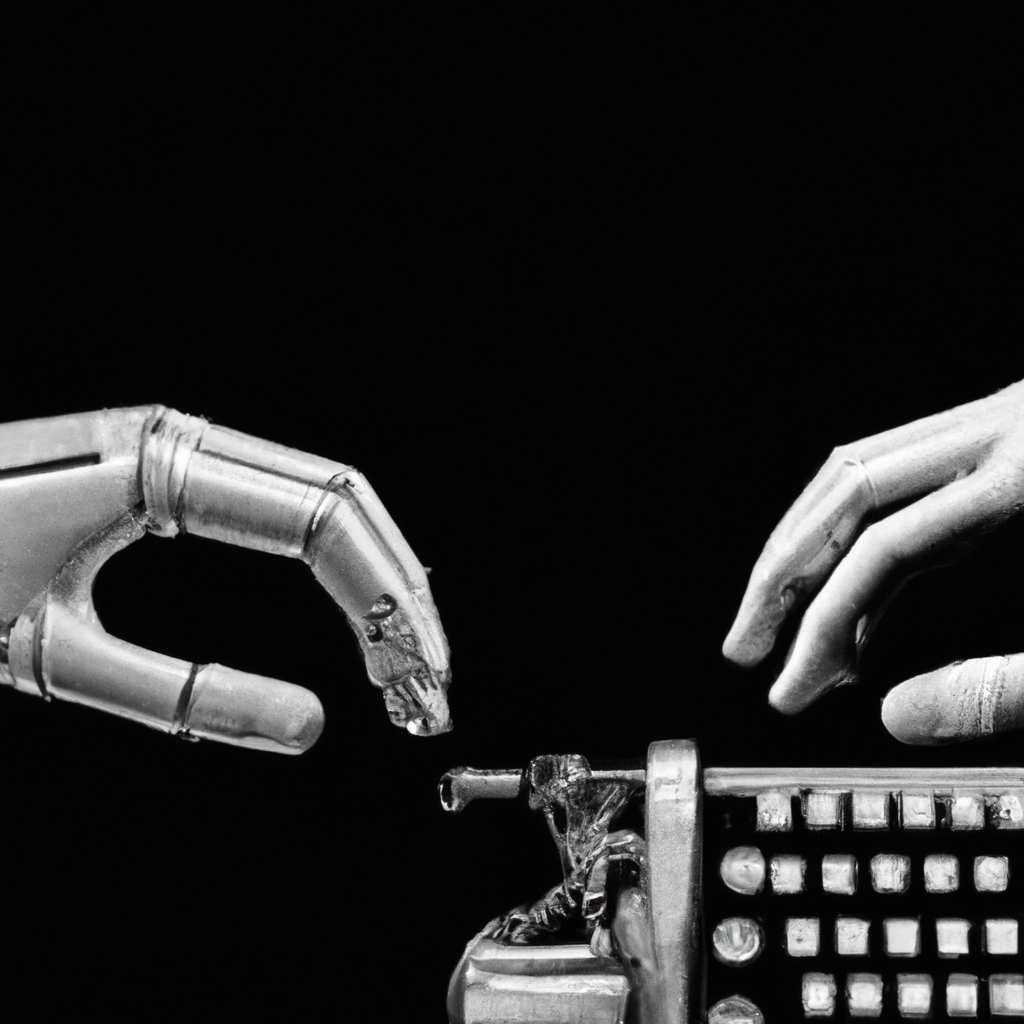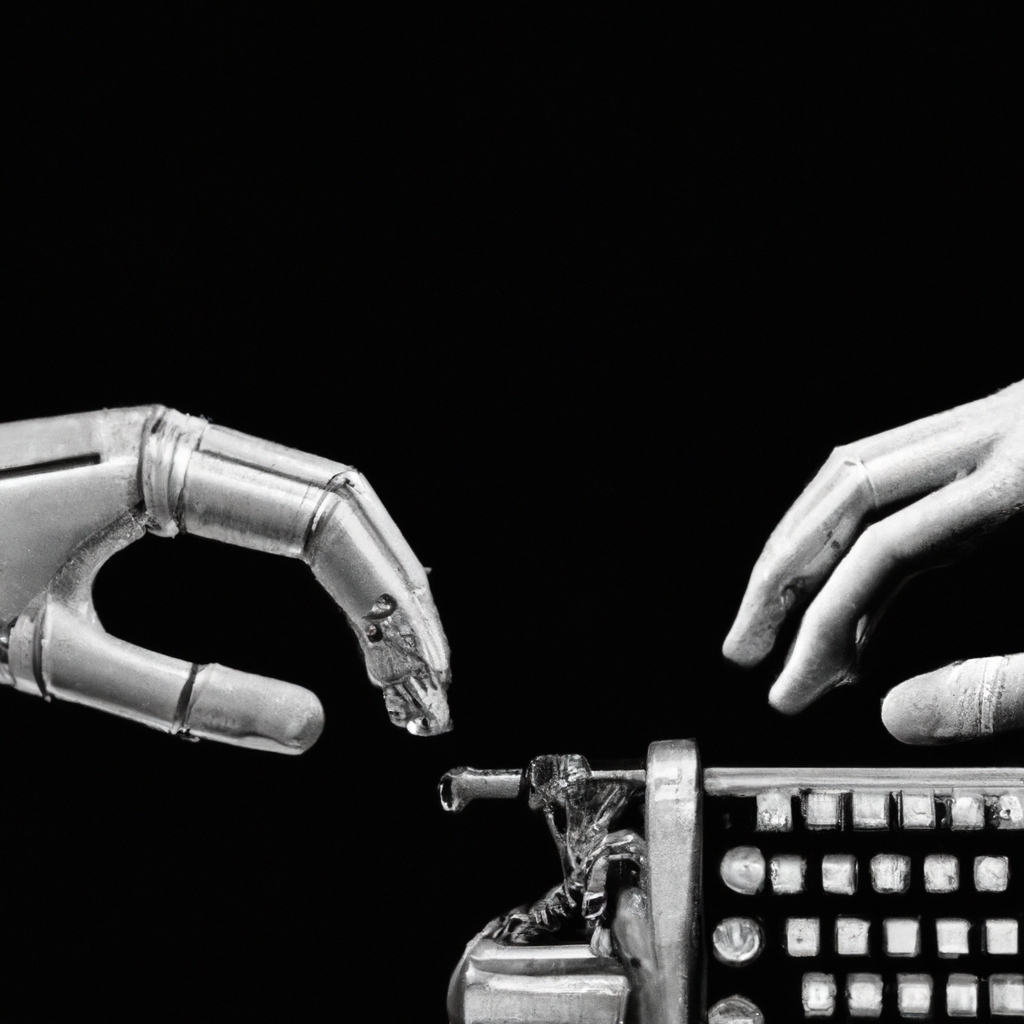Imagine a world where machines not only understand our language, but can replicate human thought and creativity through writing. A fascinating question arises: can artificial intelligence (AI) write like a human? In this article, we will explore the capabilities of AI in generating written content and delve into the innovative technologies that are bridging the gap between machine learning and human expression. Join us in discovering the remarkable progress that AI has made, and the compelling implications it holds for the future of communication and storytelling.

The Definition of AI
Artificial intelligence (AI) refers to the capability of a computer system to perform tasks that would usually require human intelligence. This includes tasks such as learning, reasoning, problem-solving, and even writing. AI has revolutionized various industries, and its impact on writing cannot be overlooked. The ability of AI systems to generate written content has raised intriguing questions about the nature of human writing and the potential for machines to replicate it.
The history of AI
The roots of AI can be traced back to the 1950s when computer scientists began exploring the idea of creating machines that could simulate human intelligence. The term “artificial intelligence” was coined in 1956 by John McCarthy, who organized the Dartmouth Conference, which is considered the birth of AI as a field of study. Over the decades, AI has gone through periods of enthusiasm and disappointment, but recent advancements in technology have breathed new life into the field.
The development of AI technology
AI technology has come a long way since its inception. Early AI systems were primarily rule-based and relied on explicit instructions to perform tasks. However, with the advent of machine learning and neural networks, AI models now have the ability to learn from data and make predictions or generate content based on that learning. This has opened up new possibilities for AI writing, allowing machines to imitate the writing styles of humans and produce creative and contextually relevant content.
Understanding Human Writing
The uniqueness of human writing
Human writing is a distinctive form of expression that reflects individuality, emotions, and experiences. Unlike other forms of communication, writing allows us to convey complex ideas, beliefs, and narratives. Human writing is not limited to conveying information; it often encapsulates personal perspectives and evokes feelings in the reader.
The complexities of human language
Human language is a complex system of communication that goes beyond mere words and grammar. It encompasses nuances such as tone, context, and cultural references, requiring a deep understanding of the intricacies of language. Human writing is not just about stringing words together; it involves storytelling, persuasive techniques, and the ability to engage the reader on multiple levels.
The creative aspect of human writing
One of the most intriguing aspects of human writing is its innate creativity. Writers have the ability to imagine and create new worlds, generate unique characters, and captivate readers with their storytelling abilities. Human writing often involves the use of metaphors, similes, and other rhetorical devices to convey ideas and evoke emotions. Replicating this creativity in AI-generated content poses a significant challenge that researchers and developers are actively working on.
What Does it Mean for AI to Write Like a Human?
Imitating human writing style
The goal of AI writing is not just to generate text but to imitate and replicate the style, tone, and voice of human writers. This involves analyzing a vast amount of existing human-written text to identify patterns, structures, and linguistic features. AI models can then utilize this acquired knowledge to generate content that mimics the writing style of humans. The ability to imitate human writing style is a significant milestone in AI development but requires continuous refinement to achieve authenticity.
Generating unique and creative content
AI writing algorithms are designed to generate content that is not only grammatically correct but also unique and creative. For example, AI models can be trained on a large corpus of literature to understand the various genres, writing techniques, and storytelling elements. By employing statistical models and neural networks, AI systems can then generate new ideas, storylines, and characters that imitate the creative aspects of human writing. Achieving true creativity in AI writing is an ongoing challenge; however, recent advancements have shown promising results.
Understanding context and emotions
One of the biggest hurdles in AI writing is understanding the nuances of context and emotions. Human writing often relies on cultural references, idiomatic expressions, and subtle hints that require a deep understanding of the context. AI models need to be trained on vast amounts of data to capture these nuances accurately. Additionally, identifying and conveying emotions in written content is a complex task that AI systems are learning to tackle. Understanding the underlying emotions in a piece of writing helps to establish the right tone and engage the reader effectively.
The Current State of AI Writing
Advancements in natural language processing
Natural language processing (NLP) is a branch of AI that focuses on the interaction between computers and human language. Significant advancements in NLP have paved the way for more sophisticated AI writing capabilities. With the use of advanced algorithms, AI systems can now understand and interpret human language more accurately. The development of transformer models, such as OpenAI’s GPT-3, has elevated AI writing to new heights, allowing for the generation of coherent and contextually appropriate text.
Examples of AI-generated content
AI-generated content has already made its way into various fields, ranging from journalism to creative writing. News organizations have experimented with AI algorithms to generate news articles automatically, reducing the time and effort required by human journalists. In the creative realm, AI systems have even produced paintings, composed music, and written novels. While the output may not always be flawless, these examples demonstrate the progress and potential of AI writing.

The Challenges in AI Writing
Maintaining coherence and flow
One of the key challenges in AI writing is ensuring that generated content maintains coherence and a natural flow. AI models often struggle to connect different ideas seamlessly, resulting in disjointed or nonsensical text. Researchers are continually refining algorithms to improve coherence and enhance the overall structure of AI-generated content. By fine-tuning the models and incorporating feedback, developers are striving to achieve a more natural and coherent writing style.
Handling ambiguity and wordplay
Language is inherently ambiguous, and wordplay adds another layer of complexity. Puns, metaphors, and double entendre are examples of linguistic devices that inject humor and wit into human writing. Teaching AI models to recognize and generate wordplay is an ongoing challenge. While AI systems can generate grammatically correct text, capturing the nuances of wordplay and its impact on writing requires further development.
Conveying emotions and tone
Emotions are an integral part of human writing, and conveying them effectively is a formidable task for AI systems. Recognizing the emotions behind a piece of writing and accurately portraying them in generated content is an area where AI has room for improvement. Sentiment analysis and emotion recognition techniques are being employed to enhance AI systems’ ability to capture and express emotions. This will not only improve the accuracy of AI-generated content but also enable machines to evoke emotional responses in readers.
The Ethical Implications of AI Writing
Potential for misuse and fake content
The rise of AI writing raises concerns about the potential for misuse and the creation of fake content. AI systems can be trained to generate deceptive or misleading information, making it difficult for readers to distinguish between what is human-generated and AI-generated. This poses serious challenges in the realms of journalism, academic research, and public discourse. It becomes imperative to develop mechanisms that can detect and filter AI-generated content to maintain the integrity and trustworthiness of information.
Ownership and copyright issues
AI-generated content raises important questions about intellectual property and ownership rights. Who holds the copyright when an AI system generates a piece of written content? Is it the developer who created the AI model, or is it the person who provided the training data? These questions are yet to be resolved, and the legal frameworks surrounding AI-generated content need to be carefully examined to ensure fairness and protect the rights of individuals.
Machine Learning and AI Writing
Training AI models with large datasets
The foundation of AI writing lies in the ability to train models with large datasets of human-written content. This enables AI systems to learn the patterns, styles, and structures of human language. By exposing AI models to a diverse range of writing genres and sources, they can develop a comprehensive understanding of human writing and generate content that aligns with it. The availability of extensive datasets plays a crucial role in improving the quality and accuracy of AI-generated content.
Fine-tuning models with human feedback
While AI models can learn from massive amounts of data, human feedback is invaluable in further refining the capabilities of AI writing. Developers frequently incorporate human input to validate and enhance the output of AI systems. Human feedback helps address issues such as biased content, factual inaccuracies, or areas where AI-generated content may fall short of human standards. The iterative process of training and refining models using human feedback ensures continuous improvement in AI writing.
The Future of AI Writing
Potential applications in various industries
The future of AI writing is promising, with potential applications across various industries. In journalism, AI can aid in generating news articles on a wide range of topics quickly and accurately. In marketing, AI can assist in creating persuasive and engaging content tailored to specific target audiences. AI also holds potential in customer service, as chatbots can be trained to deliver personalized and contextually relevant responses. Additionally, AI-powered content generation can enhance educational resources, automate translation services, and revolutionize the publishing industry.
Enhancements in AI writing technology
As AI writing technology continues to evolve, we can expect enhancements in several areas. Improved language models will result in more coherent and contextually relevant content generation. AI systems will become more proficient in capturing emotions, conveying tone, and recognizing wordplay, thereby further bridging the gap between human and AI writing capabilities. Additionally, advancements in natural language processing will enable AI models to better understand and interpret human language, resulting in more accurate and nuanced writing.
The Role of Humans in AI Writing
Collaboration between humans and AI
While the capabilities of AI writing are impressive, human involvement remains crucial in the process. Collaboration between humans and AI can bring out the best of both worlds. AI systems can assist human writers by generating drafts, providing suggestions, and automating repetitive tasks. This collaboration allows writers to focus their creative energies on refining and polishing their work, while AI systems handle the more mechanical aspects of writing.
Augmenting human writing capabilities
AI writing should be seen as a tool to augment human writing capabilities rather than replace them. AI can help writers overcome creative blocks, enhance productivity, and improve the overall quality of their work. By handling routine tasks such as proofreading, grammar checks, and fact verification, AI frees up time for writers to explore new ideas and engage in more innovative approaches to their craft. The symbiotic relationship between humans and AI in writing holds immense potential for the future of the field.
Conclusion
AI writing has come a long way, but it still has much ground to cover. From imitating human writing style to generating unique and creative content, AI systems are continuously evolving. Advancements in natural language processing and machine learning have paved the way for more sophisticated AI writing capabilities. However, challenges such as maintaining coherence, handling ambiguity, and conveying emotions remain. As AI writing progresses, it is essential to address ethical implications, ensure transparency, and foster collaboration between humans and AI. The future of AI writing holds immense potential, and by leveraging the strengths of both humans and machines, we can unlock even greater possibilities in the realm of written communication.


Comments are closed